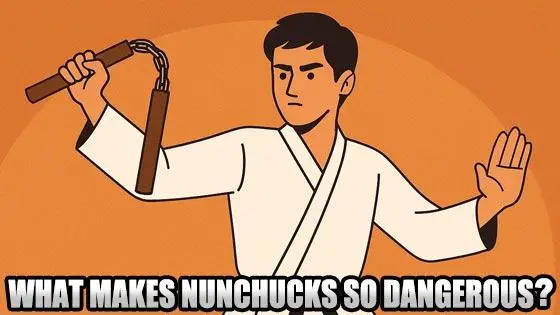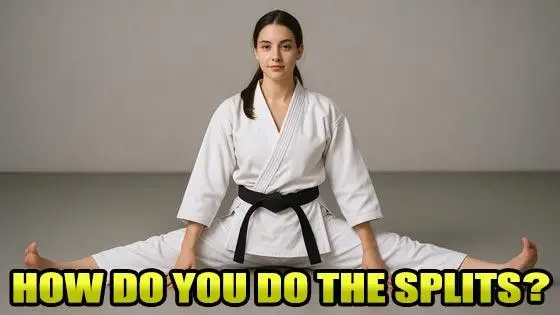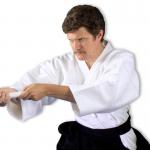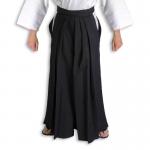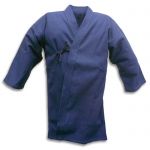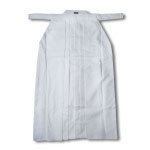Kendo Uniforms - Hakama & Keikogi - Samurai Costume
-
$52.95
-
$54.95
-
$52.95
-
$54.95
A kendo uniform, often called a kendogi (or kendo gi), is more than just a piece of clothing. It's an important part of the training process, worn by practitioners during their practice sessions and competitions. The kendogi consists of two main components: the keikogi and the hakama. While many martial arts have their own unique uniforms, the kendo gi stands out due to its historical significance and practical design.
The keikogi (or juban shitagi in some cases) is the top half of the kendo uniform, and it is typically a thick, durable cotton jacket. The design of the keikogi is similar to that of a traditional karate gi but with some distinct differences. The sleeves are typically shorter, which allows greater freedom of movement during practice, especially during the execution of strikes and defensive maneuvers. In some styles, the keikogi is worn under the armor (called bogu), while in others, like iaido or iaitoka practice, it may be worn without armor. Regardless of the style, the keikogi offers a snug yet comfortable fit, ensuring that practitioners can perform their techniques with ease.
The bottom half of the kendo uniform is the hakama, which is a pleated, wide-legged garment that resembles a skirt but is actually a pair of baggy pants. The hakama originated in the samurai era and was designed to be worn by warriors during horseback riding. It's more than just a traditional piece of clothing; it represents the disciplined and honorable nature of the samurai and their deep connection to bushido (the way of the warrior). The hakama is worn with the pleats facing forward, symbolizing various virtues, such as justice, courage, and wisdom.
In kendo, the hakama is typically worn in black, although other colors like blue or purple are also common in certain schools or dojo. The color of the hakama is a reflection of the practitioner's rank and the dojo's traditions. For example, black is often reserved for higher-ranked practitioners, while lighter colors might be seen in beginners' uniforms.
The combination of the keikogi and hakama forms the foundation of a kendoka uniform. These two pieces are essential for anyone practicing kendo, as they allow for freedom of movement while maintaining the traditional aesthetics of the martial art. The kendogi is generally made from a tough, high-quality cotton or a cotton-blend fabric, which holds up to the rigorous training involved in kendo. The hakama, made from a thicker fabric, provides the flexibility needed for swift footwork and dynamic movement.
While kendo is the most well-known martial art to use the kendogi, there are other martial arts that incorporate similar uniforms, such as iaido, iaitoka, and shinkendo. In iaido, practitioners focus on the art of drawing and cutting with a sword, and like in kendo, wearing a keikogi and hakama is a key part of the tradition. The iaido uniform, also called the iaido gi, often features a more streamlined design, focusing on simplicity and functionality. It's common for iaidoka to wear a keikogi without the heavy armor seen in kendo, as the focus is on precise, controlled movements with a katana, rather than sparring.
Similarly, shinkendo, a modern swordsmanship style created by Sensei Kenji Tokitsu, also adheres to the tradition of wearing kendo uniforms. In fact, many styles of kenjutsu (traditional Japanese swordsmanship) require their practitioners to wear kendogi and hakama, emphasizing the importance of martial discipline, respect for tradition, and connection to the samurai way.
The historical roots of the kendogi can be traced back to the samurai period of Japan. During this time, warriors would wear simple yet effective clothing designed to allow ease of movement and provide comfort during long training sessions. As modern kendo developed into the sport we know today, the uniform was refined and adapted to suit the needs of the art. The basic design of the kendogi and hakama has remained largely unchanged, as it serves both practical and symbolic purposes.
For those who practice kendo or other sword arts, choosing the right kendoka uniform is crucial. A good-quality kendogi should be durable enough to withstand the wear and tear of regular training. The fabric should be breathable and able to absorb sweat, as intense training sessions can leave you drenched. The hakama should fit comfortably and allow for unhindered movement, especially when executing quick footwork and high-impact strikes.
At KarateMart.com, we understand that a samurai costume or samurai outfit can also be a fun and unique way to experience the warrior culture, whether for cosplay, Halloween, or other themed events. Our samurai uniforms are made with attention to detail, giving you an authentic look that captures the spirit of the samurai. Whether you're looking for a classic kendo uniform for training or a samurai gi for cosplay, we have a wide range of options to suit your needs.
If you're just starting out in kendo or iaido, you may wonder what makes a good kendoka gi stand out. It's not just about the look; it's about comfort, durability, and authenticity. The best kendo uniforms are made from high-quality materials that are designed to last through intense practice. You'll want a keikogi that holds up to repeated washing without losing its shape, and a hakama that remains flexible and comfortable over time.
For those involved in iaido, wearing the right iaido gi or iaitoka uniform is just as important. While the focus in iaido is on precise, controlled movements with a katana, having a uniform that fits properly can help you move fluidly through each kata. The juban shitagi (underwear or undershirt) worn with the keikogi is also an essential component in iaido uniforms, ensuring that the top garment stays in place and doesn't shift during practice.
When choosing a kendogi or any kendo-related uniform, it's important to consider not only the quality of the material but also the fit. Too tight and you won't be able to move freely; too loose and the uniform may get in the way of your movements. A well-fitting kendoka gi allows you to focus on your training without distractions.
Whether you are a dedicated kendoka, a beginner iaido student, or simply someone with an appreciation for samurai culture, investing in a high-quality kendo uniform can make a huge difference in your martial arts experience. At KarateMart.com, we offer kendogi, keikogi, hakama, and all the essential pieces for kendo, iaido, and other related martial arts. With our wide selection of uniforms, you'll find everything you need to train in style, whether you're in the dojo or participating in cosplay events. And, of course, don't forget to make sure you get your own Kendo Shinai.





